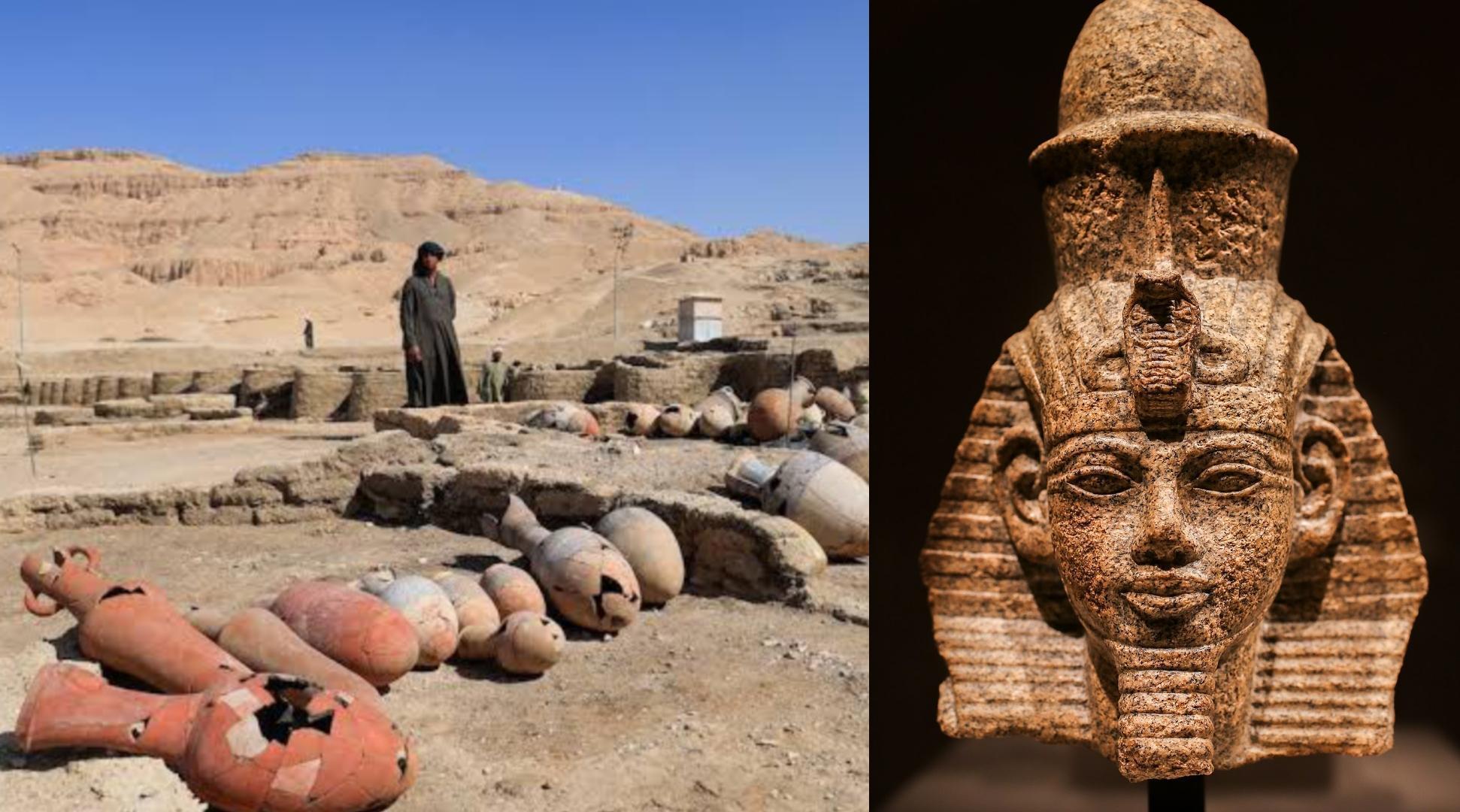Egyptian archeologists have unearthed a 3,000 year-old lost city complete with mud brick houses, artifacts and tools from the times of the pharaohs.
The mortuary city, in the southern province of Luxor, is being called the most important such find since the tomb of Tutankhamun.
It dates back to the period under King Amenhotep III of the 18th dynasty.
There have been many unsuccessful attempts to find this city, which is located on the western bank of the Nile. It was once the largest administrative and industrial settlement of its time.
Excavation began last year while searching for the mortuary temple of King Tutankhamun. But, instead, archeologists found a large well-preserved city complete with city wall and which even had rooms with wine vessels, rings, scarabs, pottery and weaving tools.
Some of the mud bricks bore the insignia of King Amenhotep III.
Egyptian archeologists have discovered a 3,000-year-old abandoned city complete with mud brick dwellings, pharaonic artifacts, and tools.
The mortuary city, located in the southern province of Luxor, has been dubbed the most significant such discovery after Tutankhamun’s tomb.
It dates from the reign of King Amenhotep III of the 18th dynasty.
Many unsuccessful attempts have been made to locate this settlement, which is located on the Nile’s western bank. It used to be the largest administrative and industrial settlement in the world.
Excavation started last year in search of King Tutankhamun’s mortuary temple. Instead, archeologists discovered a large well-preserved city complete with city wall and rooms containing wine vessels, bells, scarabs, pottery, and weaving equipment.
Some of the mud bricks bore King Amenhotep III’s insignia.
 The African History Truly African
The African History Truly African

